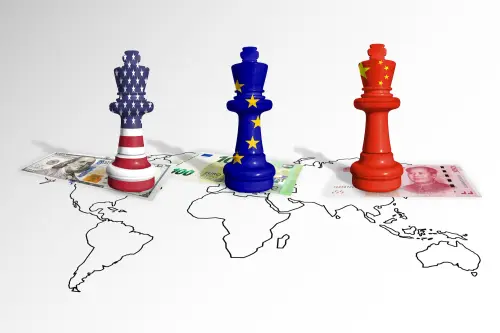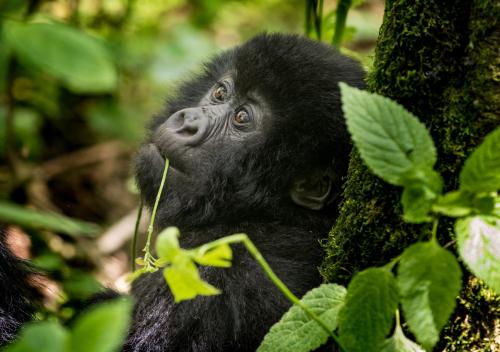Aquaculture provides the world with about 53 million tons of fish each year and over 7 percent of the animal protein people consume. [1] It includes carp, Tilapia (a freshwater fish found in Africa), Pangasius (a Mekong Delta catfish), Atlantic Salmon, other true fish, mollusks (e.g. oysters), crustaceans (e.g. shrimp), various other animals (e.g. turtles and frogs), and algae. Sixty percent of aquaculture production is from freshwater bodies and the rest is from estuaries or the sea.
Aquaculture is an important and growing source of protein for many developing nations and a substitute for wild-caught fish whose harvests have often been unsustainable — to the detriment of consumers relying on production and the species and ecosystems affected. Fish — both aquaculture and wild-caught — is particularly important in low-income food deficit countries [2] whose overall consumption of animal protein is comparatively low but whose share of fish in animal protein consumed is high (20.1 percent or more). Two priorities are critical to advancing aquaculture as a global public good: investment in Africa to expand its reach and assuring that aquaculture is environmentally and globally sustainable.
Aquaculture in Africa
Asia supplies 89 percent of global aquaculture production (China provides 62 percent of the total) and employs 94 percent of the world’s fish farmers. In contrast, Africa produces just 2 percent of global aquaculture and employs 1 percent of global fish farmers. Geography and biology do not explain this dramatic difference. Wet, tropical sub-Saharan Africa could support many more inland aquaculture facilities, and Tilapia, an African native, is one obvious choice for production. In principle aquaculture could not only feed people but also reduce unsustainable inland wild-fish harvest and the killing of monkeys and other “bush meat” animals that threatens survival of the species hunted and introduces diseases to humans. Northern Africa is drier and inland aquaculture facilities may be limited by the need for sustainable sources of freshwater, but facilities on the coast could readily support saltwater aquaculture. Food-challenged Somalia, for example, has the longest coastline in Africa and could support shrimp farms.
Expanding aquaculture in Africa is not a new idea. The World Bank and national development agencies have studied its potential and generally been positive. Furthermore, although aquaculture is limited, small-scale inland wild-capture fisheries are well developed in Africa and employ over 4 million women and men whose expertise would contribute to aquaculture development. Prospective public and private investors should carefully evaluate specific markets, governance, and other factors relevant to financially sustainable operations, but the apparent market and clear value for Africans calls for progress.
Standards for Sustainable Aquaculture
Its benefits notwithstanding, aquaculture can damage ecosystems. Shrimp, for example, are commonly farmed near saltwater bodies where mangrove forests and other wetlands naturally line the water’s edge. These wetlands harbor diverse biota, provide key breeding and feeding grounds, recharge groundwater, limit run-off impacting coral reefs and other marine life, and ameliorate the impact of storms on the land. Yet huge areas of mangroves were destroyed to build shrimp farms in Asia, leading to protests by local and international environmental activists and resulting in operations whose long-term sustainability is in question.
Several steps have been taken in response to these concerns. In 1995, the U.N. Food and Agriculture Organization (FAO) endorsed principles for aquaculture and in 2006 FAO adopted principles for shrimp farming, which can also be used as a check list for other species. These guidelines address farm siting, farm design, water use, production stock, feed stock, health, food safety, and social responsibility. Since then, several organization have elaborated on these principles in standards for certifying good aquaculture practices, including GlobalG.A.P., Friends of the Sea (FOS), the Global Aquaculture Alliance (GAA), and the World Wildlife Fund (WWF). GlobalG.A.P. and the GAA are industry led, whereas FOS and WWF are independent non-profit organizations. These different approaches may have the virtue of promoting discussion, but they also create confusion for buyers of aquaculture products and the opportunity for commercial retailers to adopt the most convenient requirements. The WWF “Aquaculture Dialogue” standards have been developed through a particularly pain-staking public process and, while not perfect, they are the best by comparison. Consumers will benefit from a single, widely accepted seal of approval and the WWF is the one around which to rally.
The WWF aquaculture standards apply to farms throughout the world and are most critical in developing nations where existing domestic regulation is less advanced. However the standards are currently limited to species (e.g. shrimp and salmon) that are marketed in developed nations where sustainability certification is considered a factor in sales. It’s time to move beyond this limitation and to develop and implement standards for all significant aquaculture species whether or not they are exported. These standards can help companies and regulatory authorities in developing nations make domestic aquaculture more productive and sustainable, particularly if assistance is provided for training and implementation. Furthermore, the opportunity for certification may promote development of export markets for a developing nation’s aquaculture production and help to sustain the farms for both domestic and foreign consumption. Carp stands out in this matter because no standard has been developed and yet it is the aquaculture industry’s leading product. Carp made up 38 percent of global aquaculture production in 2008, with over 96 percent farmed in Asia — 70.7 percent in China, 15.7 percent in India, and 10.2 percent in Bangladesh, Myanmar, Viet Nam, Indonesia, and Pakistan. Carp is mostly consumed in the countries where it is farmed, but a sustainability standard could facilitate export and also advance the growth of carp aquaculture in Africa and other developing nations. Also, a carp standard would inform national and local regulators, local communities concerned about habitat degradation and pollution, and domestic farms and processors that want to excel.
Food security is a pressing global goal in developing nations, including those in Africa, and animal proteins provide essential nutrition. Sustaining sea life is also a global goal, both for the food it provides and for many other economic and aesthetic values. Global aquaculture will serve both goals if expanded in Africa and managed sustainably wherever practiced.
Footnotes
[1] These and other statistics on food and fisheries in this article are based on information in the “The State of World Fisheries and Aquaculture 2010” of the UN Food and Agriculture Organization (FAO).
[2] See http://www.fao.org/countryprofiles/lifdc.asp for the definition and 2012 list of LIFDC. 39 of the 66 nations listed are in Africa.
The Brookings Institution is committed to quality, independence, and impact.
We are supported by a diverse array of funders. In line with our values and policies, each Brookings publication represents the sole views of its author(s).


Commentary
Op-edAquaculture Priorities: Expansion in Africa and Standards for Global Sustainability
February 13, 2012